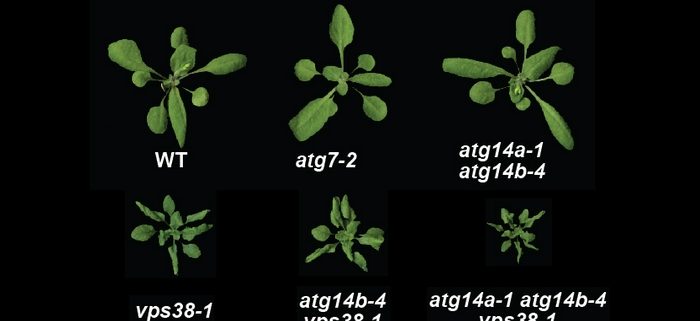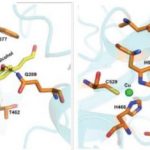In a nutshell: Finally connecting PI3P to autophagy and endosomal sorting
Liu et al., generate a novel collection of mutants impaired in PI3P biosynthesis and discovered new features and functions of this phosphoinositide in intracellular trafficking. The Plant Cell (2020). https://doi.org/10.1105/tpc.20.00285
By Richard S. Marshall and Richard D. Vierstra, Washington University, Saint Louis, USA
Background
Phosphoinositide lipids are key determinants for intracellular trafficking and membrane/organelle identity, with phosphatidylinositol 3-phosphate (PI3P) modified at the D3 position serving as an essential signature during trans-Golgi network sorting and assembly of vesicles during autophagy. In plants, PI3P is synthesized by a class-III phosphatidylinositol 3-kinase (PI3K) complex bearing the catalytic VPS34 subunit together with VPS15, ATG6, and either VPS38 or ATG14 as the fourth subunit. Previously, little was known about this complex, mainly because Arabidopsis mutants missing any of the three core subunits were blocked in male gametogenesis. While recent studies showed that homozygous mutants missing VPS38 are viable and revealed a specific role for PI3P in endosomal sorting, the viability and effect(s) of ATG14 mutants, and those missing both ATG14 and VPS38, were unknown.
Question
What are the function(s) of ATG14 in the Arabidopsis PI3K complex? Are triple mutants lacking both ATG14 and VPS38 viable? And how does their absence compromise PI3P synthesis and ultimately impact plant growth and development?
Findings
Using both T-DNA-insertional and CRISPR/Cas9-mediated mutagenesis, we generated null mutants for the two Arabidopsis genes encoding ATG14. Whereas vps38 mutants displayed severe phenotypic defects and had altered endosomal sorting, the atg14a atg14b double mutants were relatively normal phenotypically, but had strongly reduced autophagic flux and consequently senesced early and were hypersensitive to nutrient deprivation, like other autophagy mutants. Unexpectedly, homozygous atg14a atg14b vps38 triple mutants were viable but severely compromised phenotypically, with abnormal rosettes, defective pollen germination, and altered protein storage vacuole morphology, indicating that ATG14 and VPS38 are non-redundant, and while important, they are not essential to PI3K action. Surprisingly, the triple mutants still accumulated PI3P, albeit at reduced levels, but were hypersensitive to the PI3K inhibitor wortmannin, indicating that the three core PI3K subunits are sufficient to synthesize viable levels of PI3P.
Next steps
Prior functional studies on PI3P in plants were hampered by the gametophytic lethality of mutants in the core subunits of the PI3K complex. Now, with the collection of atg14a, atg14b, and vps38 alleles reported here, combined with PI3K inhibitors, fuller appreciation of PI3P action in membrane dynamics and autophagy throughout the plant life cycle is possible.
Liu et al.. AUTOPHAGY-RELATED 14 and its Associated PHOSPHATIDYLINOSITOL 3-KINASE Complex Promotes Autophagy in Arabidopsis. The Plant Cell (2020). https://doi.org/10.1105/tpc.20.00285




